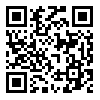Volume 25, Issue 4 (3-2013)
JMDP 2013, 25(4): 45-68 |
Back to browse issues page
Download citation:
BibTeX | RIS | EndNote | Medlars | ProCite | Reference Manager | RefWorks
Send citation to:



BibTeX | RIS | EndNote | Medlars | ProCite | Reference Manager | RefWorks
Send citation to:
Mirghafouri S H, Moravej S, Sadeqi Arani Z. (2013). A Framework for Forecasting Organizational Creativity and Innovation Based on Knowledge-centered Practices using Artificial Neural Networks Case Study: Selected Public Organizations in Yazd Province. JMDP. 25(4), 45-68.
URL: http://jmdp.ir/article-1-1342-en.html
URL: http://jmdp.ir/article-1-1342-en.html
1- , Mirghafoori@yazduni.ac.ir
Abstract: (19632 Views)
Nowadays, creativity and innovation have turned into key competitive advantages for organizations. They need to improve the factors that help them in developing their creative and innovative capacities in a way that can facilitate their success in competitive markets. One of the most influential factors in developing organizational creativity and innovation is knowledge management (KM), which leads to pushing organizational creativity envelope and improving innovation process in organizations through formulating appropriate mechanisms to get quicker access and movement of information. Considering this effect, this paper proposes a model as a framework to assess the level of organizational creativity and innovation using well-known Artificial Neural Networks as a powerful tool to consider non-liner interrelations among criteria. The model has five criteria as inputs, adopted from KMAT questionnaire, namely: process, leadership, culture, technology and measurement of knowledge management. As far as the output side of the model is concerned, it uses Multi-Layer Perceptron (MLP) to forecast organizational creativity, adopted from KEYS questionnaire, which indicates the number of innovations practiced in the organizations. In the end, sensitivity analysis is applied to examine the value of input variables influence on the outputs of the model. The results indicate that the "technology" has the greatest effect on organizational creativity and the "culture" has the most profound impact on organizational innovation.
Keywords: : Organizational Innovation, Organizational Creativity, Knowledge Management (KM), Artificial Neural Network (ANN), Multi-Layer Perceptron (MLP), Sensitivity Analysis
Type of Study: Research |
Subject:
Public Administration
Received: Oct 20 2013 | Accepted: Oct 26 2013 | ePublished: Oct 26 2013
Received: Oct 20 2013 | Accepted: Oct 26 2013 | ePublished: Oct 26 2013
| Rights and permissions | |
 |
This work is licensed under a Creative Commons Attribution 4.0 International License. |







